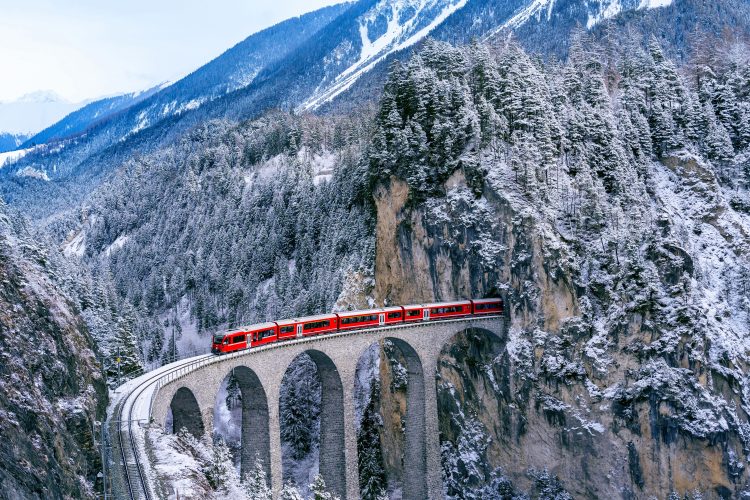Brrrr… How do train operators deal with the wintry weather?
Posted: 25 January 2024 | Emily Budgen | No comments yet
Temperatures plummet and frost is in the air, and the trains are still running. Read below to see how global companies brace for the cold.


The UK faced the wrath of Storm Isha and Storm Jocelyn recently causing train delays and closures on lines. Even though the UK doesn’t normally face the extreme weather that other countries normally endure, despite the changeability, some conditions and the recent waves of storms have caused damage to infrastructure.
A constant throughout though is the careful attention operators and engineers in the rail industry pay towards the design process, creating as little disruption as possible. Read below to find out how, around the globe, different countries prepare for the winter weather!
UK
The UK’s weather is fairly mild, with day-to-day temperatures never being in the extremes of heat or depths of the cold. Nevertheless, with snow in winter and the ever-increasing happenings of heat waves in the summer months, operators, and infrastructure leaders, such as Network Rail, must adapt. Certain challenges include:
- Ice which can coat the electrified third rail as well as overhead power cables.
- Snowdrifts which can pile on to the track and cause trains to derail.
- The thawing of ice which can cause rock slips and land slips on to the tracks.
- Tracks which can move after freezing then thawing.
- Ice which can block points, making the track harder to move.
Network Rail take these challenges in their stride. A winter fleet keeps the railway running through winter, including helicopters and drones for the collecting of visual and thermal imaging. The most northern regions of the UK, including Scotland, have a dedicated avalanche team in case a track gets blocked. Likewise, the installation of NASA grade insulation allows tracks to maintain a steady temperature. Some companies even run ghost trains, trying to keep tracks clear of snow, ice, and debris, so morning commuter trains are not delayed.
Due to the short periods of extreme weather the UK experiences, it wouldn’t be economically efficient to pre-stress rail track for heat or cold, hence why extreme temperatures or weather conditions might cause delays, disruptions, or closures.
USA
American railroad company Union Pacific have adapted their own methods for battling the elements. As they operate in the 23 western states of the US, Union Pacific have to plan for all weather-related eventualities. In order to keep moving, Union Pacific uses low horsepower locomotives. They are typically employed to move cars within the railroad’s yards. In the winter season, condensation (then freezing temperatures) in their air brake systems, such as the A-1 charging valve, can freeze.
Union Pacific electrician, Rafal Nikolajuk, has devised a smart solution, however. Nikolajuk stores spare parts in his truck, therefore is able to complete repairs within 20 minutes of arrival.
“This is a much more efficient solution that keeps our locomotives moving,” Nikolajuk said. “Instead of an hour delay as I retrieve the part from supply and make the trip back to the yard, I can replace the part as soon as the problem is identified so the crew doesn’t need to swap out the locomotive.”, Nikolajuk said.
Union Pacific services are relied on for the transportation of goods, including food and clothing, hence their operation is vital to numerous communities across America.
“This is the perfect example of an employee closest to the work leveraging their knowledge to drive efficiency,” said Daniel Hendry, senior manager-Locomotive Facility. “Our team is self-motivated and empowered to make decisions that improve the day-to-day aspects of our operations.”
Other preparations for the cold weather include pre-weather briefings for all staff, and restocking personal equipment which is designed to keep out the cold, such as spiked boots and thick winter work gloves.
Finland
Finland’s main operating company VR are used to the extreme weathers their Scandinavian country face each winter. Before Christmas, in the depth of winter, they had to replace 15% of their services (roughly 30 trains) per day with buses. They normally operate 200 long distance services daily, including between Helsinki and Kupitaa. Over 10,000 passengers were affected. Despite this, all of VR’s trains run throughout winter as normally as possible – no small feat when the average snowfall each year for northern Finland is between 60-90cm and for the southern region 20-30cm.
Come rain or shine, rail operating companies globally are able to overcome weather-related obstacles, through design, training or thinking outside the box.
More Like This



